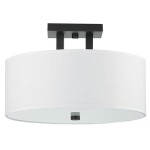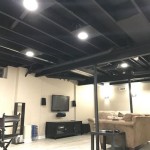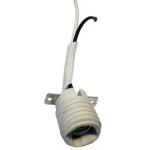Light Bulb Wattage for Ceiling Lights: Essential Considerations
Ceiling lights play a vital role in illuminating our homes, creating a welcoming and functional space. The wattage of the light bulbs used in these fixtures significantly impacts the overall ambiance and visibility of the area. Understanding the different wattages available and how they affect lighting levels is crucial for making informed decisions when choosing the perfect bulbs for your ceiling lights.
Understanding Light Bulb Wattage
Wattage is the measure of electrical power consumed by a light bulb. It indicates the amount of energy required to produce light. Higher wattage bulbs produce more light, while lower wattage bulbs emit less light.
Traditionally, incandescent light bulbs were used for ceiling lights. However, with the advent of more energy-efficient technologies, such as LEDs and CFLs, the wattage rating has taken on a different meaning. While the wattage of an incandescent bulb directly corresponds to its light output, the same cannot be said for LED and CFL bulbs.
Lumens: The True Measure of Light Output
For LED and CFL bulbs, lumens provide a more accurate measure of light output. Lumens represent the total amount of visible light emitted by the bulb. The higher the lumens, the brighter the bulb. When choosing bulbs for ceiling lights, it is essential to consider the desired brightness level and select bulbs with an appropriate lumen output.
Wattage Conversion for LED and CFL Bulbs
Since the wattage rating of LED and CFL bulbs does not directly correspond to their light output, it is helpful to use wattage conversion charts to estimate the equivalent brightness of incandescent bulbs. These charts provide a general idea of the appropriate wattage replacement for different lumen outputs.
For example, an incandescent bulb with a wattage of 60 watts typically emits around 800 lumens. To achieve a similar brightness level with an LED bulb, you would need to choose a bulb with a lumen output of around 800 lumens. According to conversion charts, this would correspond to an LED bulb with a wattage of approximately 10-12 watts.
Factors to Consider When Choosing Wattage
When selecting the appropriate wattage for ceiling lights, consider the following factors:
- Room size and function: Larger rooms require higher wattage bulbs to provide adequate lighting. Consider the intended use of the space; for example, a kitchen may require brighter lighting than a bedroom.
- Ceiling height: High ceilings require higher wattage bulbs to reach the desired brightness level.
- Light fixture type: Some fixtures, such as chandeliers, may require multiple bulbs with higher wattages to create a balanced and well-lit space.
- Natural light: If the room receives ample natural light during the day, you may opt for lower wattage bulbs for evening use.
Recommended Wattage Ranges
The recommended wattage ranges for ceiling lights vary depending on the factors mentioned above. As a general guide, consider the following ranges:
- Small rooms (under 100 sq ft): 40-60 watts equivalent
- Medium rooms (100-200 sq ft): 60-80 watts equivalent
- Large rooms (over 200 sq ft): 80-100 watts equivalent
- Very large rooms or rooms with high ceilings: 100+ watts equivalent
Conclusion
Choosing the appropriate wattage for ceiling lights is essential for creating a well-lit and comfortable space. By understanding the different factors that influence wattage selection and considering the lumen output of LED and CFL bulbs, you can make informed decisions that will enhance the functionality and ambiance of your home.

Which Light Bulb Wattage Do I Need Explained
Dining Room Chandelier Ideas Light Fixtures

Led High Bay Guide What You Need To Know

What Wattage Is Best For Bathroom Lighting 2024 Badeloft

Light Bulb Brightness The Home Depot

Lighting Guide How To Choose The Right Light Bulb For Each Lamp

Led Equivalent Wattages Against Traditional Lighting Hut

Don T Be Fool While Selecting Best Led Lights In

What Is The Maximum Wattage Bulb For Modern Pendant Lighting

Wattage Vs Lumens Know The Difference For Better Lighting
Related Posts







